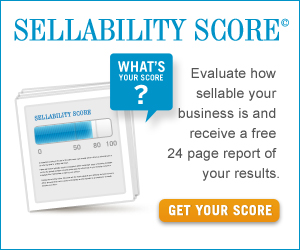Republished with permission from Built to Sell Inc.
 Warren Buffett famously invests in businesses that have what he calls a protective “moat” around them – one that inoculates them from competition and allows them to control their pricing.
Warren Buffett famously invests in businesses that have what he calls a protective “moat” around them – one that inoculates them from competition and allows them to control their pricing.
Big companies lock out their competitors by out-slugging them in capital infrastructure investments, but smaller businesses have to be smarter about how they defend their turf. Here are four ways to deepen and widen the protective moat around your business:
Get certified
Is there a certification program that you could take to differentiate your business? A Canadian company that disposes of radioactive waste decided to get licensed by the Canadian Nuclear Safety Commission. It was a lot of paperwork and training, but the certification process acts as a barrier against other people jumping into the market and competing.
Is there a certification you could get that would make it more difficult for others to compete with you?
Create an army of defenders
Ecstatic customers act as defenders against other competitors entering your market, a factor that has enabled companies like Trader Joe’s to defend their market share in the bourgeois bohemian (bobo) market, despite a crowded market of stores hawking groceries
Get your customers to integrate
Is there a way you can get your customers to integrate your product or service into their operations?
The basic switching costs of Customer Relationship Management (CRM) software are virtually nil. Everyone from 37signals to Salesforce.com will give you a free trial to test their wares.
The real expenses associated with changing CRM software only come when a business starts to customize the software and integrate it into the way they work. Once a sales manager has trained his salespeople in creating a weekly sales funnel in a CRM platform, try to convince him to switch software.
Can you offer your customers training in how to use what you sell to make your company stickier?
Become a verb
Think back to the last time you looked for a recipe. You probably “googled” it. Part of Google’s competitive shield is that the company name has become a verb. Now every time someone refers to searching for something online, it reinforces the competitive position of a single company.
Is there a way you could control the vocabulary people use to refer to your category or specialty?
Widening your protective moat triggers a virtuous cycle: differentiation leads to having control over your pricing, which allows for healthier margins, which in turn lead to greater profitability and the cash to further differentiate your offering.
If you are curious to see how your growth stacks up and if you’re building a business you could sell one day, take the 13 minute Sellability Score questionnaire:
Take the Quiz here: The Business Sellability Audit
Why not find out now if your business is sellable?
This free online tool is the only no-risk step you can take to determine if your business is ready to get full value. Fast-track your analysis by taking advantage of this free, no-obligation free online tool.
This Sellability Score you instantly receive is a critical component to any business owner’s complete financial plan and is something that, until now, we have only made available to existing clients.
However, we recognized that there is value in knowing in advance of working with a financial planner whether or not your largest asset is ready to be exchanged for your retirement nest egg. Our view is that you are better to learn more about your businesses sellability today and find out how your business scores on the eight key attributes so that you can ensure you obtain full value.
If your business part of your retirement plan, finding out your sellability score will be the best 10 min. you could ever spend working “on” your business.
 For more free information on Creating A Business Owner’s Dream Financial Plan, you can listen to a free, eight part series we did exclusively for business owners. The show is also available to subscribe to for free via iTunes.
For more free information on Creating A Business Owner’s Dream Financial Plan, you can listen to a free, eight part series we did exclusively for business owners. The show is also available to subscribe to for free via iTunes.
















